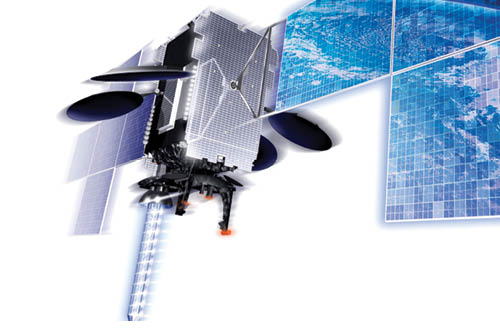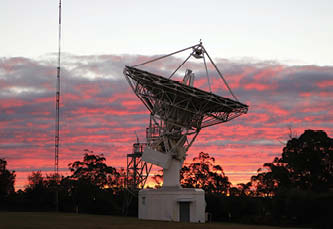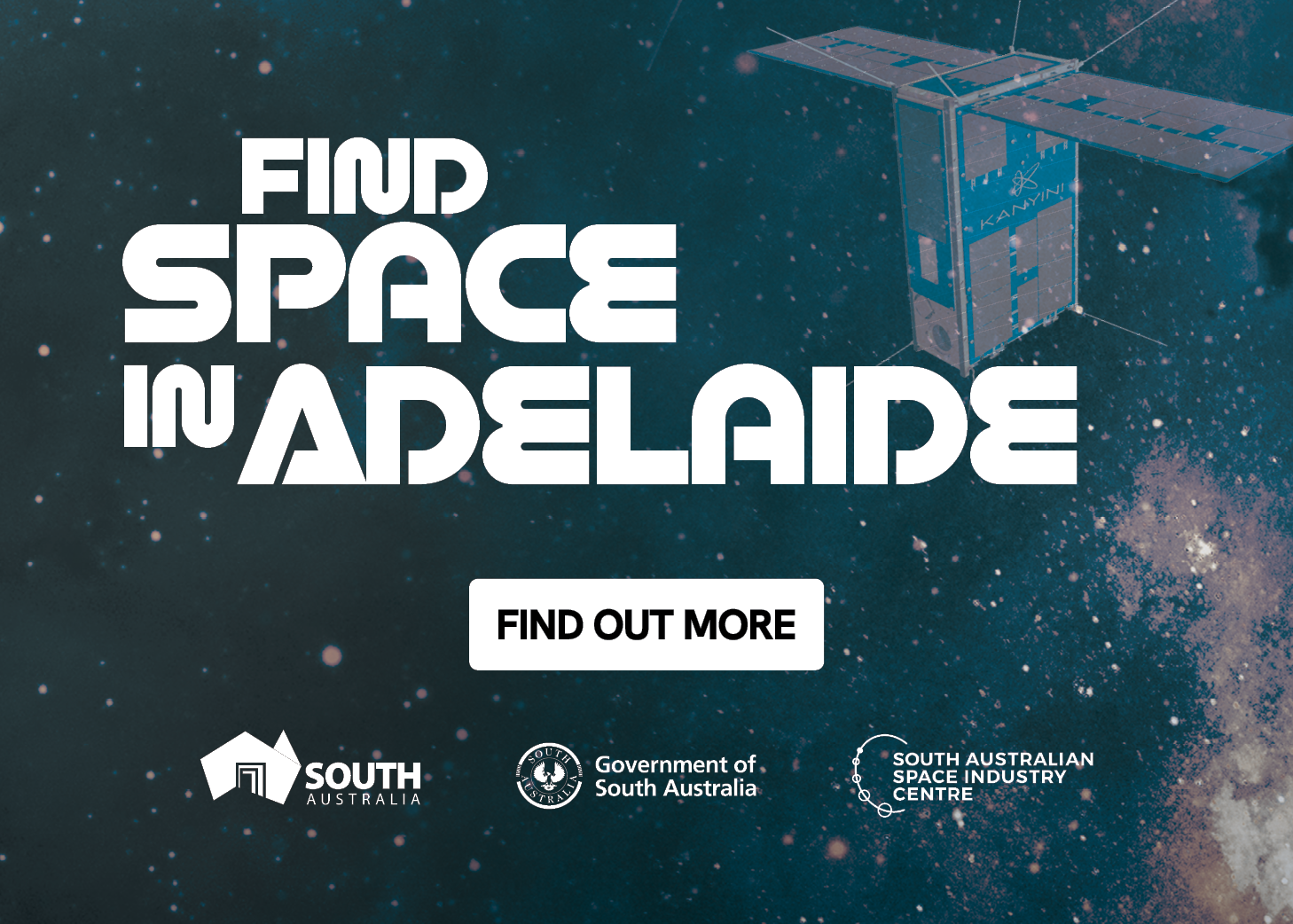Ruth Harrison
Earlier this year, the Australian Department of Defence announced the JP9102 tender, the Australian Defence Satellite Communication System. There are currently five companies vying for the opportunity to deliver this Australian first sovereign capability, which closed in January 2022.
One of Australia’s most important, and largest, space infrastructure projects is starting to take shape. It’s related to Australia’s sovereign satellite communications capabilities, across a number of industries (mainly defence, but including communications) – and is set to engage a wide array of industry stakeholders in the process.
The JP9102 project is starting to create an opportunity for the Australian industry to show the world the quality of its space capability. While the major contractor is going to be granted to an International defence prime due to the size and complexity of the project, there is plenty of scope for local Australian businesses and industry to get involved.
JP9102, the Australian Defence Satellite Communication System (ADSS), will see the delivery of infrastructure that is critical to Australia’s security. Under JP9102, the Australian Department of Defence is looking to increase the resilience, agility and flexibility of defence’s military Satellite Communications (SATCOM) capability.
Currently, this capability is provided by the hybrid satellites, carrying both military and commercial payloads, Optus C-1 and Intelsat-22. Australia also has access to the US-led Wideband Global SATCOM (WGS) which is a high capacity global defence satellite network, used by a number of other nations, including Canada and New Zealand.
The new SATCOM system will provide the Australian Defence Force (ADF) with a significantly improved sovereign capability, ensuring the ADF have access to timely, accurate and relevant information and data. This will facilitate an improved ability to gather and disseminate real-time information and increase data capability.
According to a defence spokesperson, JP9102 is primarily aimed at addressing the Defence need for satellite communications, the ability to support the whole of Government outcomes is a key consideration.
The Defence industry stated that it sees significant Australian Industry opportunities in the systems software development, systems integration, facilities construction, system operators, sustainment, and participation in the supply chain through manufacture and supply of subsystems and components.
Five groups have announced that they have delivered a bid for the program, including Boeing who currently provide the satellites for the WGS, Airbus, Lockheed Martin, Northrop Grumman and Optus.
AIRBUS AND TEAM MAIER

Airbus have formed team Maier, to deliver their bid with Martin Rowse as the in-country campaign lead for the aerospace multinational. They are looking to deliver a variant of their successful Skynet program, which is currently in use with the UK Ministry of Defence. The variant of the Skynet 6A, which will be added to the UK fleet in 2025 will be uniquely tailored to the Australian requirements.
“The way that Airbus always works is that every satellite that we create is tailored to the customer needs, so we have a number of satellites such as Skynet 6A which act as a baseline. They will then be updated for the Australian requirement. Obviously, everything continues to evolve and to improve, so I think we have an ability to really showcase that heritage, showcase what we can do in programs like Skynet 6A but also make sure that it’s tailored to meet the Australian requirement,” said Rowse
“We [currently] provide sovereign satellite capability to military capability to the UK, France, Germany, Spain and the UAE. And they are all different,” added Rowse.
Engaging Australian industry and Indigenous businesses are key considerations for defence, which has pushed the potential tenderers to ensure they have a good look at the current and near-future Australian capability under the Australian Industry Capability (AIC) component.
Airbus announced the inclusion of UGL, a specialist in ground control infrastructure, into team Maier; they also have an existing relationship with Barpa, an Indigenous-owned construction company and will look to leverage this relationship as part of the overall tender. UGL would design and construct all ground infrastructure supporting the JP9102 project, including the communications systems, network operations and systems integration, as well as providing ongoing sustainment. Willyama, one of the country’s leading Indigenous and veteran-owned professional services companies, have also joined the team.
Willyama Director, Kieran Hynes, said: “We are proud to be partnering with Team Maier as the security accreditation partner for JP9102. It’s a unique opportunity to be part of something that will be integral to the sovereign space landscape for years to come and we’re pleased to use our extensive capabilities to contribute to the success of Team Maier.”
BOEING

Boeing has also put its hat in the ring, with Kathryn Burr program managing the bid. Boeing could be in the box seat, having developed the BSS-702 bus that is the basis for the satellites used in the WSG. WSG-11 is due to be added to the system in 2024 and will use the latest variant of the 702 bus, the 702X.
Australian industry content is an important part of the tender requirements with each organisation looking to set up partnerships and utilise local knowledge, Boeing is no exception.
Boeing has announced that Saber would support the program with their troubleshooting AI system, Clearbox would provide expertise in SATCOM software development and integration and Leidos Australia would provide cyber security and network integration services. Leidos Australia, Sauber Astronautics, Clearbox Systems and Viasat are also part of Boeing’s proposed team. Boeing has chosen the Indigenous Defence and Infrastructure Consortium (iDiC) to support the project.
“On the JP 9102 project iDiC is working closely with Boeing in a range of areas from facilities, training, ICT, design and cyber,” said iDiC Director George Mifsud of the partnership.
“With our partners, iDiC brings an Indigenous lens to the project to ensure that Aboriginal and Torres Strait Islander People continue to play an important and lead role in caring for and respecting the land, water, air and space as they have done for tens of thousands of years. Indigenous businesses and people want to be a part of this long term national building project as we continue to build capability and capacity in technologies of the future. What could be more sovereign than having Aboriginal and Torres Strait Islander businesses working on a sovereign SATCOM solution,” he added.
Burr is under no illusions as to the size of the project and its importance to Australia’s SATCOMs capability.
“This is a significant investment in sovereign space capability for the Australian Defence Force. Their requirements are very much focused on a combination of our capacity to support the ever-growing need for SATCOM across all 3 services and joint domains. They have a need for coverage, obviously a primary area of interest in the Australian region but more broadly Pacific and Indian oceans,” she said.
The space domain is currently changing at a rapid pace, and with a sovereign capability highly important to Australia’s defence strategy, it is clear that any winning bid will need to be flexible and able to be updated as requirements and technology change, Burr agrees.
“The threat environment today is not going to be the same as the threat environment tomorrow, so a system that is resilient and able to be adapted to meet the changing threat environment is incredibly important,” she said.
“The big-ticket item in JP9102 is the satellites, and they are a hugely important part of it, but equally it is important to offer that total system capability for the defence forces consideration of the control segment, which is really the software that stitches it all together and then the ground segment, the infrastructure, the antennas, modems, terminals. All those sorts of things that you need to make the whole system work,” said Burr.
LOCKHEED MARTIN

Lockheed Martin has a significant space heritage, including Satcom-1 which became their first commercial satellite when it was launched in 1975. Within its space portfolio, Lockheed has expertise across the whole satellite system from ground stations to commercial and civil space systems as well as defence communications and Earth observation.
According to Rod Drury, Vice President International for Lockheed Martin Space, Australia is a great place for a company like Lockheed Martin.
“Australia is important because it represents a stable economy with governance, a very good and innovative workforce and a very good environment, meaning engineering, technical science environment upon which to establish our business and one of the [little known] aspects about Lockheed Martin in Australia is that we have been here for just under 30 years,” said Drury.
Lockheed has announced several new appointments to bolster their space capability, including Ms Julia Dickinson as Chief Engineer, Military Satellite Communications.
Ms Dickinson will be responsible for the overall Australian engineering performance for Lockheed Martin’s JP9102 program solution. She joins Lockheed Martin Australia (LMA) from NBN Co where she was the lead technical authority for the space segment of the national broadband provider’s satellite program.
“With Lockheed Martin’s rich heritage, industrial capability and commitment to working with local industry and research partners, I am thrilled to join a company that is contributing so significantly to the development of Australia’s space-oriented industries and technologies,” she said.
Lockheed is also putting together a team to support their bid, which includes Clearbox Systems, Ronson Gears, Shoal Group and Av-Comm. Clearbox Systems, were the inaugural graduate of Lockheed’s mentor-protege program, which saw the team at Clearbox receive extensive mentoring support from Lockheed executives in both Australia and the US.
Clearbox has created a platform that brings together independent systems and provides a single pane of glass operating environment. The ability to bring together legacy, independent and sometimes disparate systems will be a significant priority for this program as it looks to replace and replicate a number of systems.
Sydney based Av-Comm, a leading satellite communications infrastructure and services provider will oversee the design, implementation, integration, and testing of the installation of high capacity wide-band antenna and radio-frequency subsystems at several satellite ground stations should the LMA proposal win.
TEAM AUSSAT

At the end of August, Optus, Thales and Raytheon announced they would form team AUSSAT to bid on JP9102. According to Nick Leake, Head of Satellite and Space Systems, Optus, the AUSSAT team feel they have the best mix of capability and experience to deliver this complex project.
“We have a unique proposition being the only team with an unrivalled history of owning and operating satellites in Australia, by Australians, for Australians – including the current defence payload on Optus-C1 – with Team AUSSAT drawing synergies from our partners with their exceptional pedigrees in building and delivering world-class Defence capabilities for a number of decades,” said Leake about the team bid.
Optus C1 which was launched in 2003, is a communications satellite-carrying 24 commercial Ku-Band transponders that cover Australia and New Zealand as well as Papua New Guinea, Hawaii and South East Asia. The geostationary platform which was jointly funded by defence had its contract to support defence extended in 2017 for a further 10 years.
Team AUSSAT take their experience and strong Australian ties seriously and believe that the AIC component of the tender falls in their favour.
“Optus as a leading telecommunications provider has invested over $22 billion into our Australian telecommunications network and, along with our partners, we employ over 19,000 Australians today. We all have strong AIC, to begin with, and this tender provides Team AUSSAT with an opportunity to continue to grow Australian skills in a high-tech sector, strengthen existing partnerships with local universities and further build SME partnerships under a joint strategy that is going to benefit Australians and position our nation as a global leader in space,” added Leake.
Raytheon Australia Managing Director Michael Ward said the company was ready to draw on decades of expertise in delivering certified and integrated space systems. “Raytheon Australia has been delivering certified sovereign space solutions and complex system integration to the Australian Defence Force for decades, partnering with them and local industry to unlock the full potential of satellite data.
In combined operational deployments the ADSS will support the ADF where intensive data networks are required. Continued development of new assets and a drive towards a more cohesive and interoperable ADF will mean this program will be critical to the future defence force.
It won’t just be the ADF that will benefit from the capability delivered under JP9102. During the unprecedented bushfires that burnt an estimated 18.6 million hectares in the summer of 2019/20, Australia relied heavily upon the WGS. The extended capability to support the containment efforts, whilst approved within 24hrs of the request to the US for access, would not have been delayed with a sovereign system.
Northrop Grumman have confirmed that they have submitted a proposal for the JP9102 program but have declined to provide further information on their bid.
https://rocketwomanaus.medium.com
Main picture: Lockheed Martin’s Uralla station, near Armadale, NSW, which is used primarily for satellite Tracking, Telemetry and Control. Lockheed Martin.













